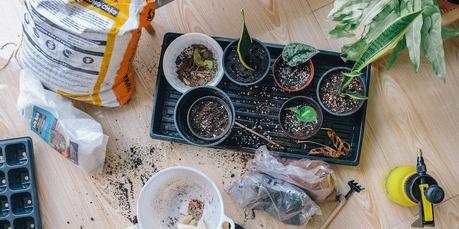
Introduction:
Gardening is a wonderful journey of nurturing plants, but to truly unlock their full potential, it all starts with understanding the foundation beneath our feet: the soil. In this comprehensive guide to gardening, we will explore the fascinating world of soil types and delve into techniques to improve garden health. Whether you're a seasoned gardener or just starting out, this article will equip you with the knowledge and tools to cultivate a thriving and bountiful garden.
Importance of Soil:
The soil is more than just dirt; it's a dynamic ecosystem that provides essential nutrients, water, and support for plant growth. We'll explore the key roles of soil in gardening, from anchoring plants to storing and releasing moisture and serving as a reservoir of vital nutrients.
Understanding Soil Composition:
To make informed decisions about your garden, it's crucial to understand the different components of soil. We'll discuss the three primary components—sand, silt, and clay—and their proportions in various soil types. Learn how soil texture influences drainage, aeration, and nutrient availability.
Soil Types and Characteristics:
Discover the characteristics of different soil types, such as sandy soil, clay soil, loam soil, and silt soil. We'll explore their unique properties, strengths, and challenges, helping you identify the type of soil in your garden. Understanding your soil type is the first step toward effective soil management.
Testing Your Soil:
Performing a soil test is a valuable practice to assess its pH level and nutrient content. We'll guide you through the process of obtaining a soil sample and interpreting the results. Armed with this information, you can make targeted amendments to optimize your soil's health.
Improving Soil Health:
Healthy soil is the cornerstone of a successful garden. We'll delve into techniques for improving soil health, including organic matter addition, composting, cover cropping, and crop rotation. These practices enhance soil structure, increase nutrient availability, and promote beneficial microbial activity.
Nutrient Management:
Plants require essential nutrients for healthy growth. We'll discuss the primary macronutrients (nitrogen, phosphorus, and potassium) and secondary macronutrients (calcium, magnesium, and sulfur), along with micronutrients. Learn how to identify nutrient deficiencies and apply organic fertilizers to maintain optimal nutrient levels.
Mulching and Water Management:
Mulching plays a vital role in moisture retention, weed suppression, and temperature regulation. We'll explore various mulching materials and techniques to conserve water, reduce evaporation, and provide insulation for plant roots. Additionally, we'll delve into effective water management practices, including proper watering techniques and irrigation systems.
Composting:
Composting is nature's way of recycling organic matter. Discover the art of composting and how it enriches soil with nutrients, improves soil structure, and promotes beneficial soil organisms. We'll guide you through the composting process, from choosing the right materials to maintaining a balanced compost pile.
Soil Erosion Prevention:
Soil erosion can be a challenge, especially in sloped areas. We'll discuss erosion control measures, such as terracing, contouring, and planting groundcover plants. These techniques help stabilize soil, prevent runoff, and preserve the integrity of your garden.
Sustainable Soil Practices:
Embracing sustainable soil practices is not only beneficial for your garden but also for the environment. We'll explore eco-friendly approaches, including organic gardening, rainwater harvesting, and minimizing chemical inputs. By prioritizing sustainability, you contribute to the long-term health and resilience of your garden and surrounding ecosystem.
Conclusion:
Understanding soil types and improving garden health is at the core of successful gardening. By comprehending the intricacies of soil composition, testing and amending as needed, and implementing sustainable practices, you can create an optimal environment for your plants to thrive. So, roll up your sleeves, dig into the world of soil, and embark on an exciting journey of nurturing your garden to new heights. Happy gardening!
RELATED ARTICLES:
10 Essential Gardening Tools Every Gardener Needs
How to Create Wildlife-Friendly Garden?

